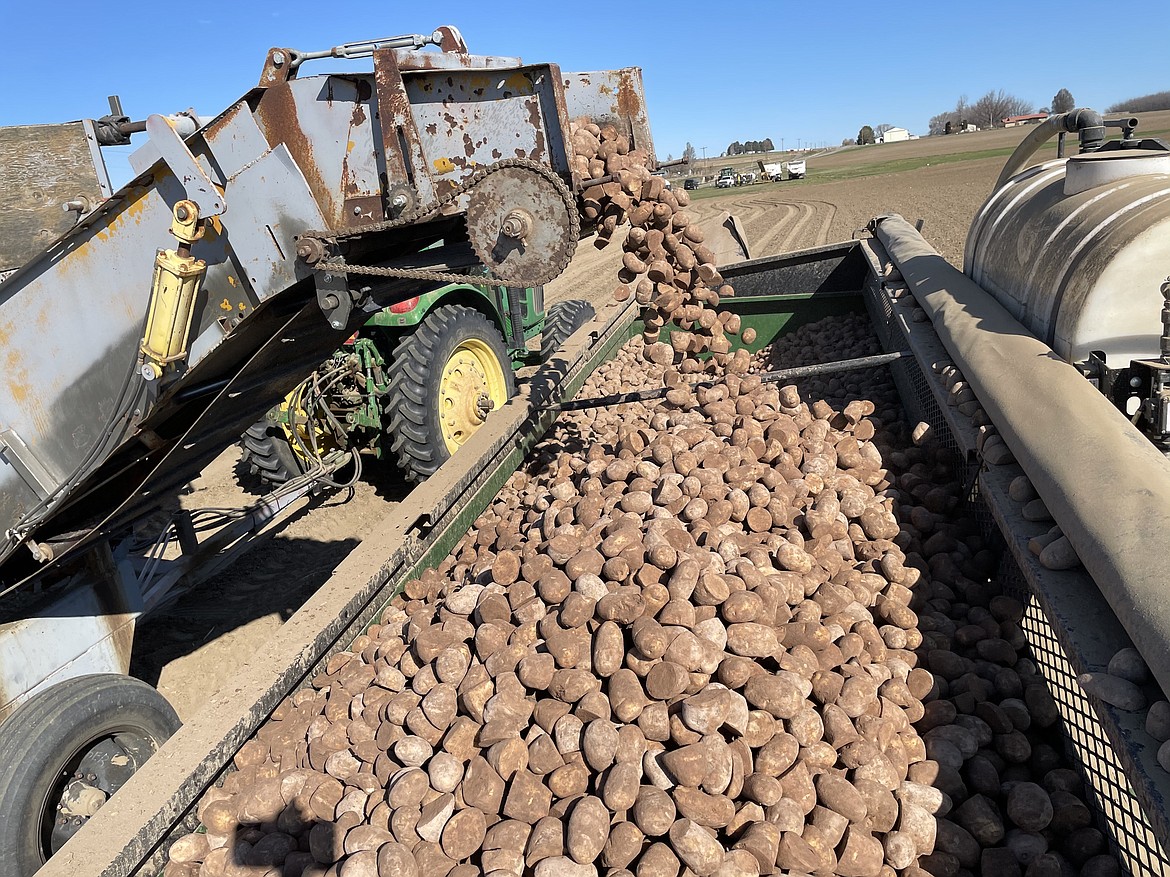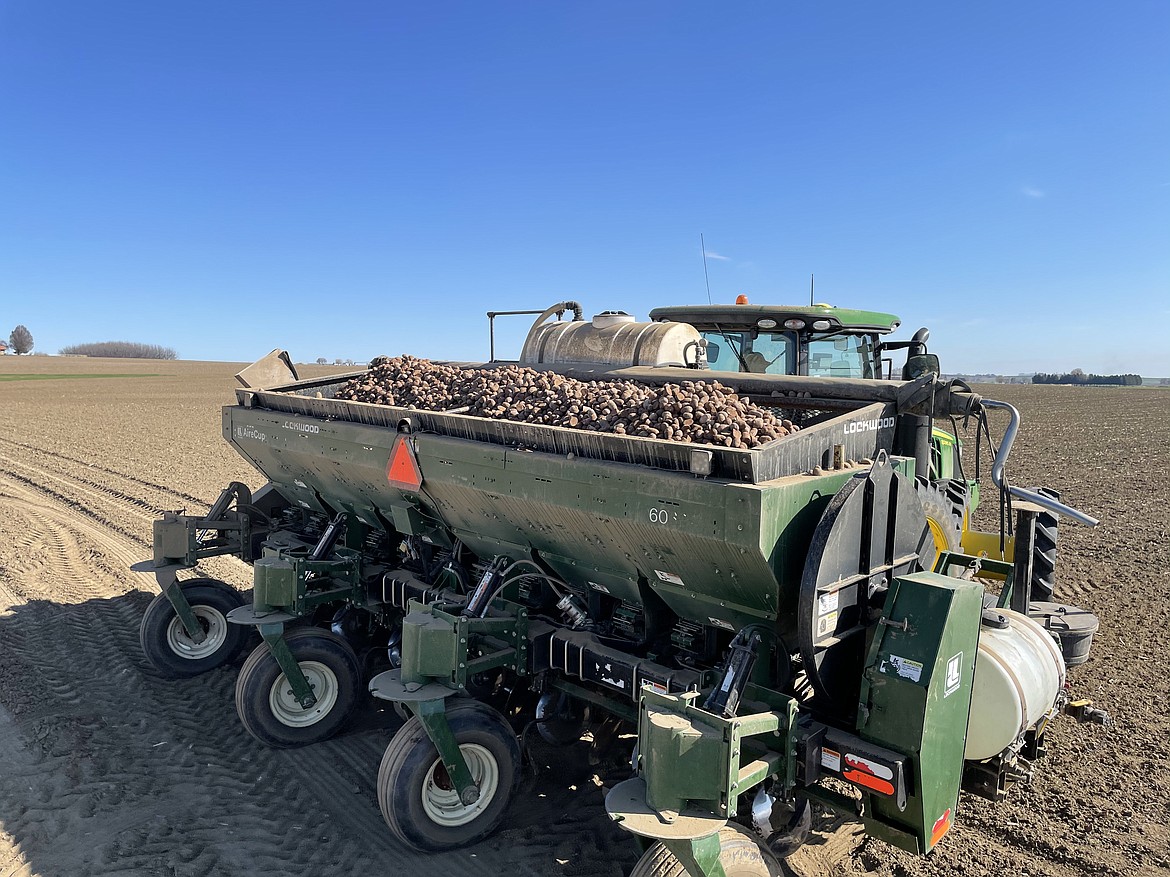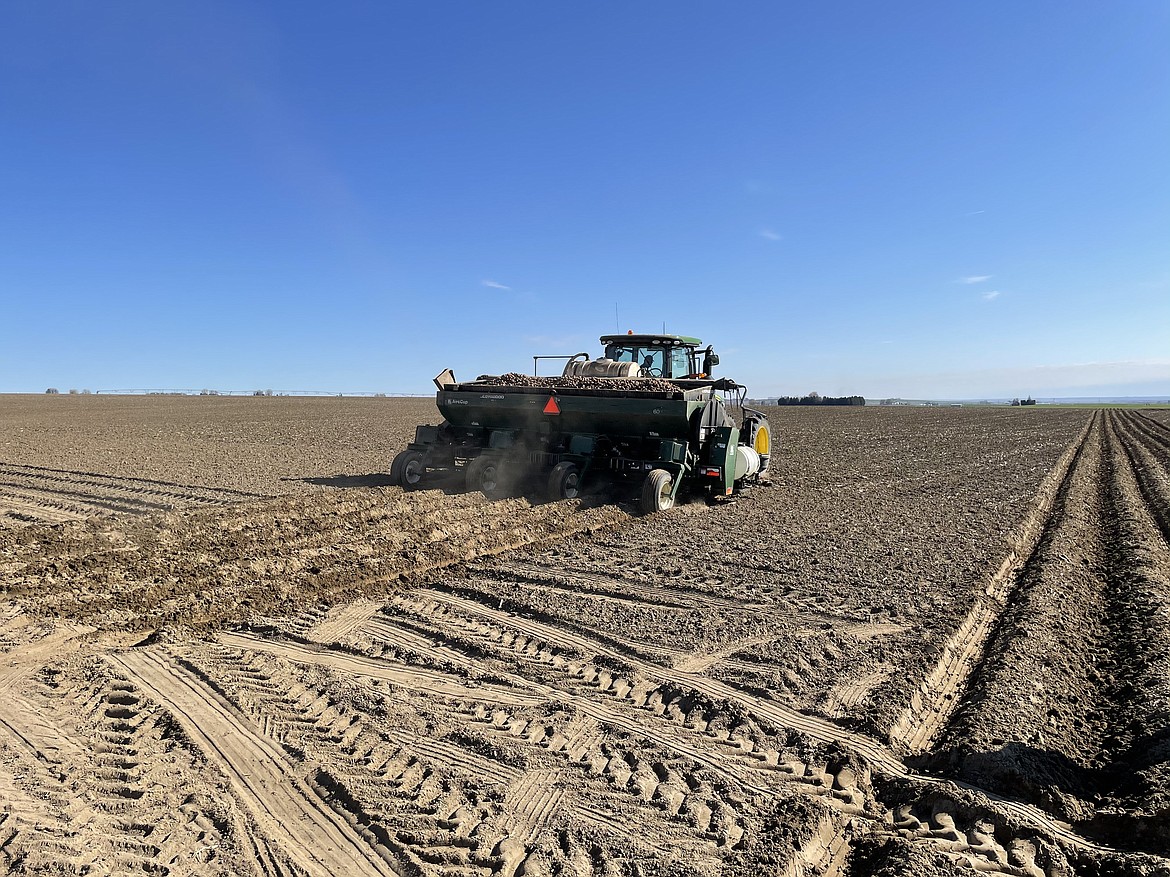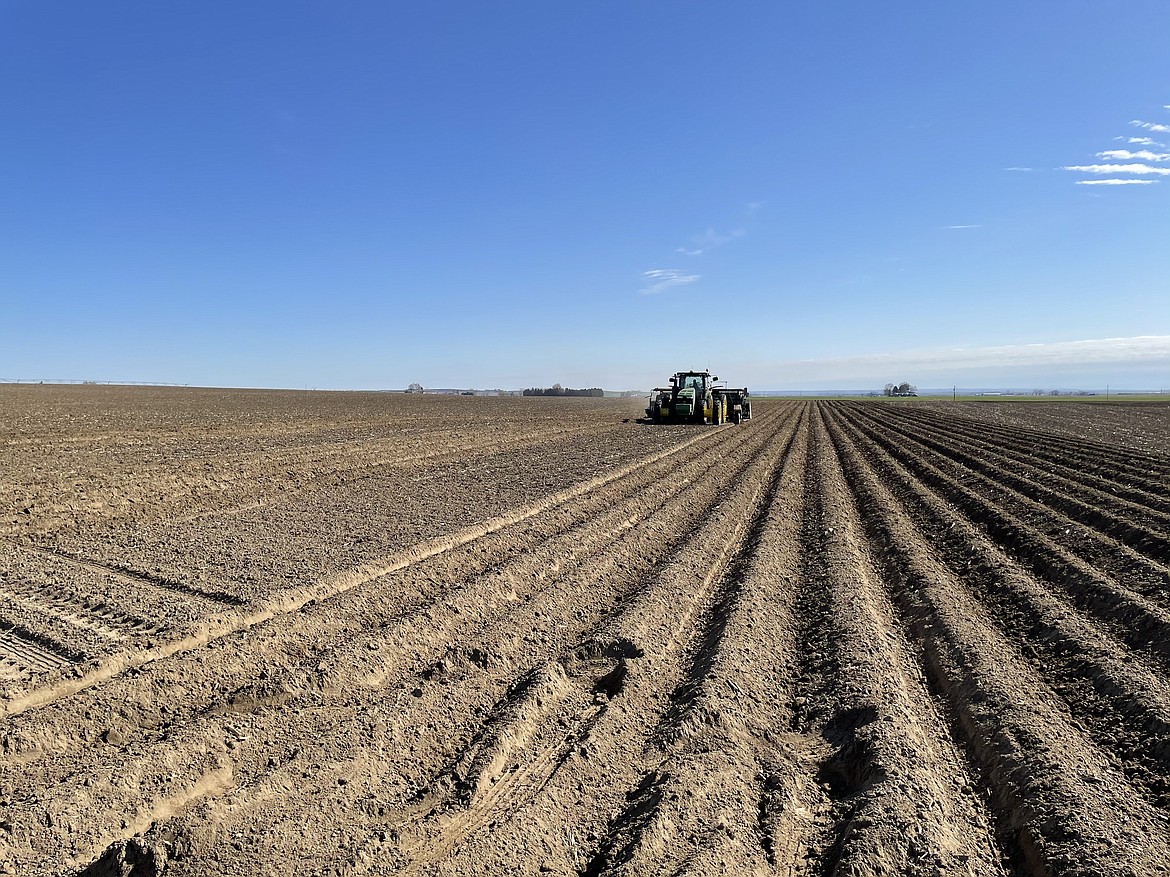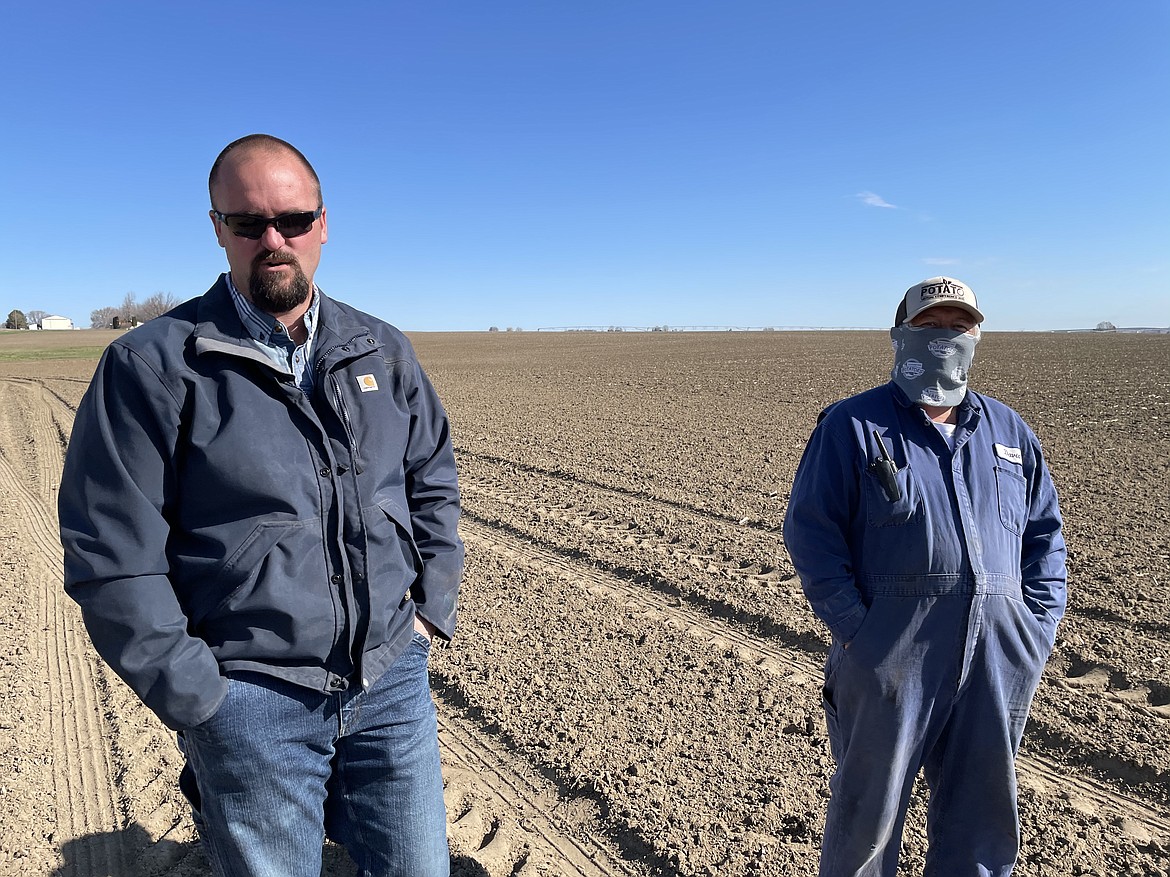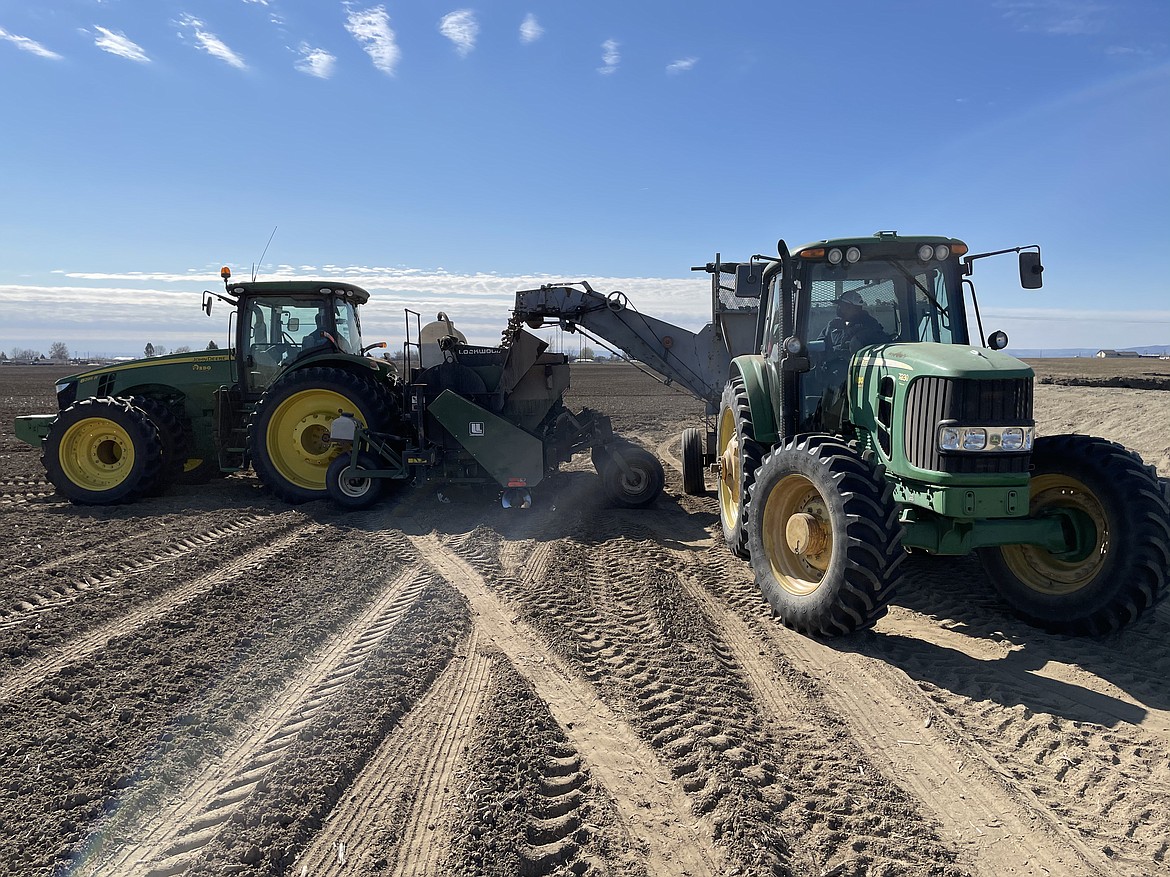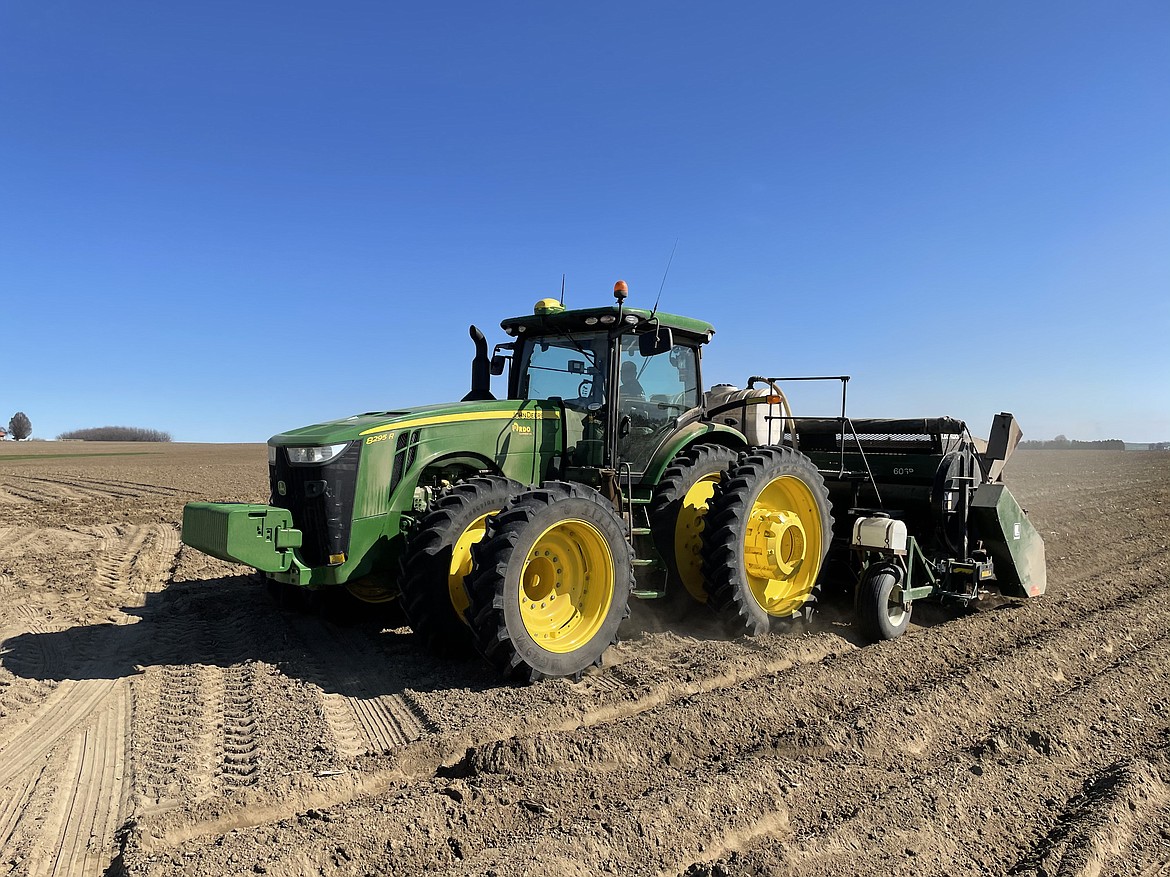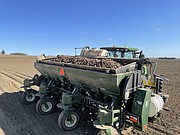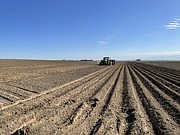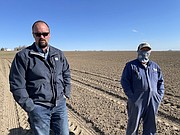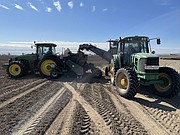Planting potatoes in Pasco: Basin farmers sow thousands of tons of spuds every spring
PASCO — Dust rises gently into the still air as the tractor moves slowly through the field.
The tractor and the massive planter it’s pulling are moving at a very steady, computer controlled 4 miles per hour. Every 11 inches, puffs of air shoot six small potato pieces 11 inches deep into the six long mounds plowed out of the earth, and then quickly covers them.
Grant Morris stands and watches. As a partner in Schneider Farms since 2005, this is his business — planting potatoes.
It takes about 6,000 pounds of seed potatoes to sow an acre of potatoes, according to Morris, and Schneider Farms is expecting to plant 1,300 acres this spring. Which means they need around 7.8 million pounds — or 3,800 tons — of potatoes to make it possible to grow this year’s crop.
“It takes a lot of potatoes to grow a lot of potatoes,” Morris said.
David Razo, who has 20 years of experience working in potato fields — the last seven with Schneider Farms — is keeping a close eye on the planting. Even though it’s very precisely controlled by computers — GPS systems track the speed and position and even drive the tractor — Rabo checks frequently to make sure nothing goes wrong.
“The most important thing in planting the seed is to check the spacing and the depth and the chemicals we are applying, that they are even and the potatoes grow fine,” he said.
“If we plant 60 acres and only check it once, and then something goes wrong, that’s a lot of acres out,” Morris added. “David watches it like a hawk, always digging and always checking.”
Morris said most potato farmers try to start planting in the southern reaches of the Columbia Basin around March 1, about three to four weeks earlier than they do in Grant and Adams counties, in large part because the weather is a little warmer and that means the soil is also a little warmer around planting season.
“Everybody’s always pushing to get in earlier, to get a crop in earlier. The more time it has to grow, the better it does,” he said.
Even when the weather does cooperate, and Morris said 2021 has so far been a good year for planting, below-freezing temperatures at night in early March can still delay planting, as can wet soil.
“Don’t want to expose the seed to 10-15-degree nights. On cold mornings, wait for the air to warm up so we’re not exposing that seed directly to the air,” he said.
Difficulty getting seed can also delay or increase the costs of planting. This year, Morris said Schneider Farms was getting its seed potatoes from a grower in eastern Montana, but cold temperatures and difficulties with the roads meant instead of hauling the seed by semi-tractor trailers, it had to be hauled by van because the cold temperatures would freeze the potatoes, increasing the cost significantly.
“Sometimes you can’t get your seed on time. Typically want your seed a couple weeks before we plant; sometimes it’s coming in and going right to the field with it,” he said.
But Schneider Farms started preparing to plant this year’s crop even before last year’s was completely harvested, Morris said. In the fall, soil is tested, fields are selected, some are fertilized and fumigated as well. And then farmers have to get their seed potatoes, either cut them themselves or make arrangements to get them cut and treated before planting.
Morris said with the good weather this year, everyone started planting at the same time. Which meant potato cutters and fertilizer makers are often working as fast as they can just to keep up with all the demand.
“They can’t keep up the supply of fertilizer,” he said. “So you spread a little bit, and wait for a truck. Spread a little bit, and stop and wait. And everybody’s in the same boat.”
It also means even before a farmer has started putting actual potatoes in the ground, the costs involved are significant.
“With potatoes, just in general, to get to this point there’s already a lot of management involved,” he said. “Before you even plant, there could be a $1,000-per-acre or $1,200-per-acre investment before you even have a crop in or have contracts.”
Morris said Schneider Farms specializes right now in growing two varieties of potatoes — Ranger and Clearwater — used primarily by food processors to make potato chips. Both types of russet potato, the Ranger was developed in 1977 as a late-developing potato by the U.S. Department of Agriculture in cooperation with researchers in the Pacific Northwest, while the Clearwater was created in 2008, also for the region’s potato farmers.
Morris said Schneider Farms’ one planter can sow about 50 acres per day of potatoes.
Potato farmers speak of “seed,” but what they mean when they say that are the small potatoes or potato pieces used to grow new potatoes. Actual seeds produced by flowers are called “true seeds,” and no real potato farmer plants those because the potatoes that would grow would most likely not have the attributes processors need for fries or chips and farmers wouldn’t get paid anywhere near as much.
“You can plant a whole potato, but for economics, you cut them into smaller pieces,” he said. “You plant that, and you will get a genetic copy of the mother plant. The daughter tubers will be the same as the mother.”
The goal is not variety — that’s something plant breeders experiment with to get the next great breed of potatoes — but uniformity and predictability, Morris said. Genetically identical potatoes with the same characteristics that will fry up identically no matter what.
“They want exactly the same french fry every time. They have to have the same specific gravity, so they cook the same amount of time, same length, same width, so the size of the fries and the ratio of the fries are the same all the way through,” Morris said. “Variation is bad when it comes to processing.”
While Morris said for a time, Schneider Farms grew the baby potatoes sold in fresh packs at grocery stores, as well as peas and sweet corn, the company focuses on growing potatoes for Simplot, which uses them almost exclusively to make french fries.
“Everything we do is Simplot right now,” Morris said. “There are only so many varieties you can put into a McDonald’s french fry.”
In fact, Schneider is a direct supplier, Morris said. The company has no storage facilities, and during the long harvest season from July to as late as November, the farms can supply around 30-35 acres of potatoes each day right to the processor, which can take a potato dug up that morning and have it turned into a french fry and flash frozen within six hours.
A farmer with adequate storage can harvest the same acreage in about two weeks rather than nearly four months, he said. And all of that is dependent on the processors, what they are making, and how fast they make it.
“You can only harvest as much as that processing plant can take in, which is why the harvest stretches so far out,” he said. “Simplot can change the load count, or a plant breaks down or they’re creating a different product and their line flow changes, that will change what we do, too.”
Morris said this year is a bit of a risky year. Schneider Farms is planting without a contract, hoping there will be a demand for perfect french fry potatoes beginning in July when they start digging.
“Farming is a little like gambling in Las Vegas,” he said.
But that’s also one of the reasons they have invested so heavily in the hardware and software to help operate the already costly farm equipment. Processors are always trying to find cheaper potatoes, so growers always have to find a way to lower their costs by using things like water, fertilizer and even seed potato more efficiently.
“All the low-hanging fruit, the seed spacing and the water, all the easy stuff is done,” Morris said. “It’s really the technology that allows us to do what we do. Without it, it would be really hard to survive on what we’re doing.”
Charles H. Featherstone can be reached at [email protected].


